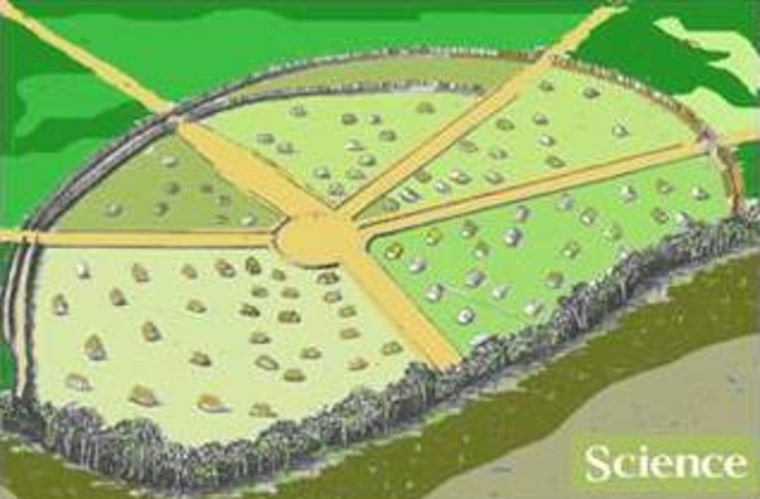Spanish adventurer Gaspar de Carvajal wrote of "cities that gleamed white" and "very fruitful land," on his wanderings along the Eucadorian Napo River in 1541. But today there is little evidence of such a civilization. Instead this corner of the Amazon, like the rest of the massive tropical forest, is seemingly inhospitable: full of dense, obstructive vegetation and buzzing with poisonous creepy crawlers.
Is this a case of a Spaniard painting pretty pictures to pocket more money for future conquests, or an example of a perfectly executed cover-up directed by Mother Nature herself?
The Washington Post recently reported on the work of Augusto Oyuela-Caycedo of the University of Florida, who is part of a growing number of anthropologists who believe an ancient, advanced society once occupied Amazonia.
Though Oyuela-Caycedo and others do not necessarily take Carvajal at his word, they do believe that subtle soil disturbances in the Amazon landscape prove the past existence of a complex society — potentially even the one Carvajal claims he encountered.
Evidence for a past civilization is subtle — so subtle that it can easily be mistaken for nature. For example, proponents of the ancient Amazon society theory rely heavily on the wide distribution of terra preta sites; pieces of land with fertile soil. Initially, researchers thought terra preta formed from volcanic ash deposits or old swampland.
"But as terra preta was studied more in-depth by scholars from multiple disciplines, it was found to be the result of permanent human occupation of a site, an accumulation of organic matter, low-temperature burning charcoal and ash from fires," Oyuela-Caycedo told Discovery News.
Another line of evidence is the pattern of vegetation in the Amazon. Researchers, "recognized a pattern of clusterings of many fruit trees at archaeological and surrounding areas, which suggest that people have been enriching the forest with desirable species for a long time," Oyuela-Caycedo said. "Now we are beginning to recognize that anomalous concentrations of economic plant species in the forest are most likely due to human actions."
Critics of the theory, like Betty Meggers, a researcher at the Smithsonian Institution, remain unconvinced. Even if these pieces of evidence prove people once lived in the forest, she does not believe that this necessarily equates to a complex civilization, one comprised of many millions of people.
If they existed, where did all the people go? And why is it that the only current residents of the forest are small, nomadic tribes?
Oyuela-Caycedo and others believe that this society, like other indigenous groups of South America, were killed by diseases brought over by Europeans, including Spaniards like Carvajal.
Both sides remain steadfast in their ideas. Meggers represents the old way of thinking, and Oyuela-Caycedo touts the new wave of thought.
Beyond the debate itself, there is now fear that people hoping to exploit the Amazon's resources might use this anthropological data in support of future mining and logging. After all, if the forest survived such a large civilization before, how is today any different?
This is dangerous thinking, and in fact, not a legitimate comparison to make. "The past and present indigenous people have been successful stewards of the forest and have created a wonderful artifact that is what we see today and that we call Amazonia," Oyuela-Caycedo explained. Modern logging and mining interests would vastly eclipse past communities' level of resource use.
